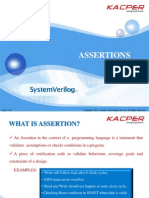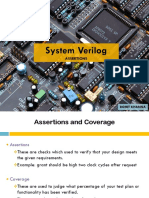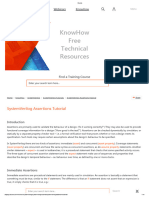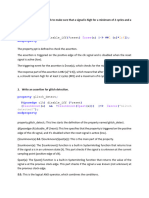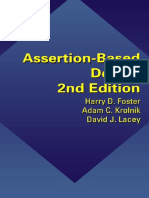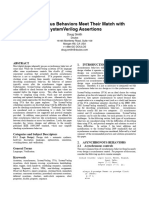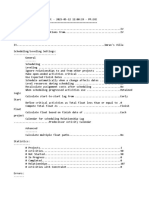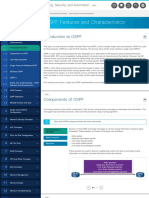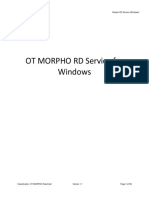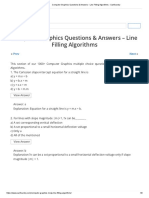0% found this document useful (0 votes)
52 views6 pagesSystem Verilog Assertions
The document outlines key concepts and interview questions related to assertions in SystemVerilog, emphasizing their role in verifying digital designs. It details types of assertions, syntax, and examples of immediate and concurrent assertions, as well as their applications in debugging and protocol compliance. Additionally, it explains the differences between assert, assume, and cover, and provides various assertion examples for specific design behaviors.
Uploaded by
19r21a0413Copyright
© © All Rights Reserved
We take content rights seriously. If you suspect this is your content, claim it here.
Available Formats
Download as PDF, TXT or read online on Scribd
0% found this document useful (0 votes)
52 views6 pagesSystem Verilog Assertions
The document outlines key concepts and interview questions related to assertions in SystemVerilog, emphasizing their role in verifying digital designs. It details types of assertions, syntax, and examples of immediate and concurrent assertions, as well as their applications in debugging and protocol compliance. Additionally, it explains the differences between assert, assume, and cover, and provides various assertion examples for specific design behaviors.
Uploaded by
19r21a0413Copyright
© © All Rights Reserved
We take content rights seriously. If you suspect this is your content, claim it here.
Available Formats
Download as PDF, TXT or read online on Scribd
/ 6
























